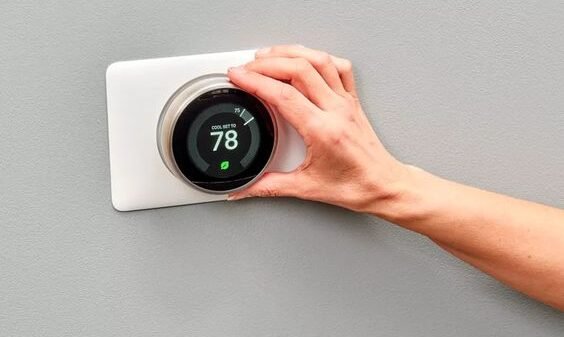In today’s digital age, direct mail marketing remains a powerful tool for businesses to connect with their target audience. However, for direct mail marketing automation to be effective, ensuring accurate and up-to-date address information is crucial. This is where Address Lookup APIs come into play. In this comprehensive guide, we will explore the significance of Address Lookup APIs and delve into the documentation required to seamlessly integrate them into your direct mail marketing automation system.
Chapter 1: The Role of Address Validation APIs in Direct Mail Marketing Automation
Direct mail marketing automation has transformed the way businesses engage with their customers. Instead of manually verifying addresses, businesses can now harness the power of Address Validation APIs. These APIs play a pivotal role in ensuring the success of your direct mail campaigns in several ways:
- Data Accuracy: Address Validation API helps in maintaining accurate and up-to-date address databases. This reduces the chances of mail being delivered to incorrect or outdated addresses, ultimately saving time and resources.
- Cost-Efficiency: Accurate address validation reduces the cost of returned mail and resending, as well as helps minimize wasted marketing materials.
- Improved Customer Experience: When your mail reaches the right audience at the right address, it enhances the overall customer experience, leading to increased customer satisfaction and loyalty.
- Compliance: Many industries have specific regulations regarding address accuracy. Address Validation APIs help ensure compliance with these regulations, reducing the risk of legal issues.
Chapter 2: Understanding Address Lookup API Documentation
To leverage the benefits of Address Lookup APIs, you need to familiarize yourself with their documentation. Address Lookup API documentation typically consists of the following key components:
- Authentication: Address Lookup APIs often require authentication for access. This can include API keys, tokens, or other methods. The documentation should provide clear instructions on how to obtain and use these credentials.
- Endpoint URLs: The documentation should specify the endpoint URLs where you can send requests to access the API. It should also detail the available HTTP methods (GET, POST, etc.) for interacting with the API.
- Request Parameters: To perform address validation, you need to provide certain parameters in your API requests. These may include the recipient’s address, city, state, postal code, and country. The documentation should outline the required parameters and their formats.
- Response Format: The API’s response format is crucial for processing the results. It should provide clear information on the structure of the response data, including the fields you can expect and their meanings.
- Error Handling: No API is error-proof, and understanding how to handle errors is vital. The documentation should include a section on common error codes and their meanings, along with suggestions for handling them gracefully.
- Rate Limits and Usage Guidelines: Address Lookup APIs often come with rate limits to prevent abuse. The documentation should specify these limits and provide guidelines for responsible API usage.
- Examples: Practical examples of API requests and responses can be immensely helpful. The documentation should include sample code snippets in various programming languages to assist developers in integrating the API.
Chapter 3: Choosing the Right Address Lookup API
Before diving into the documentation, it’s essential to select the right Address Lookup API for your direct mail marketing automation needs. Here are some key factors to consider:
- Accuracy: Look for an API with a reputation for high accuracy in address validation. The API should be capable of correcting minor address discrepancies.
- Coverage: Ensure that the API covers the geographic regions you intend to target. Different APIs may have varying coverage across countries and regions.
- Ease of Integration: Choose an API that aligns with your development stack. A well-documented API with SDKs and libraries for popular programming languages can simplify integration.
- Scalability: Consider your future needs. An API that can scale with your business as it grows is a valuable asset.
- Cost: Understand the pricing structure of the API. Consider factors like the number of API calls, rate limits, and any additional fees.
- Support and SLA: Assess the level of support provided by the API provider. A Service Level Agreement (SLA) can offer peace of mind regarding uptime and response times.
Chapter 4: Address Lookup API Documentation in Action
Let’s dive into a hypothetical scenario where we explore the documentation of an Address Lookup API to understand how it can be integrated into direct mail marketing automation.
Example API:
Authentication: The Addressify API requires an API key for authentication. You can obtain one by signing up on their developer portal.
Endpoint URL: The base URL for Addressify API is `https://api.addressify.com`.
Request Parameters: To validate an address, you need to send a POST request to `/validate`. Required parameters include `street`, `city`, `state`, `postal_code`, and `country`.
Response Format: Addressify responds with a JSON object containing fields such as `validated_address`, `confidence_score`, and `suggested_correction`. This information helps you verify and, if needed, correct the address.
Error Handling: The API provides detailed error codes, such as `400 Bad Request` for invalid parameters or `401 Unauthorized` for authentication issues.
Rate Limits and Usage Guidelines: Free tier users have a rate limit of 1000 requests per day, while premium plans offer higher limits. Ensure you adhere to the rate limits to avoid disruptions.
Examples: Addressify offers code examples in Python, JavaScript, and Ruby to assist developers in making API calls. Here’s a Python snippet:
import requests
url = “https://api.addressify.com/validate”
api_key = “your_api_key_here”
payload = {
“street”: “123 Main St”,
“city”: “Anytown”,
“state”: “CA”,
“postal_code”: “12345”,
“country”: “US”
}
headers = {
“Authorization”: f”Bearer {api_key}”
}
response = requests.post(url, json=payload, headers=headers)
data = response.json()
if response.status_code == 200:
print(“Validated Address:”, data[‘validated_address’])
print(“Confidence Score:”, data[‘confidence_score’])
else:
print(“Error:”, data[‘message’])
By following the Addressify API documentation, you can seamlessly integrate address validation into your direct mail marketing automation system.
Chapter 5: Best Practices for Address Validation in Direct Mail Marketing Automation
While having access to an Address Lookup API is essential, implementing best practices can further enhance the effectiveness of your direct mail marketing automation:
- Regular Data Cleansing: Periodically cleanse your address database to remove outdated or incorrect entries. Address Lookup APIs can assist in this process.
- Fallback Mechanism: Implement a fallback mechanism in case the API encounters downtime. This ensures that your direct mail automation remains operational.
- User Input Validation: Validate addresses at the point of entry, such as during customer registration on your website, to prevent incorrect data from entering your database.
- Monitor Confidence Scores: Pay attention to the confidence scores provided by the API. Lower scores may indicate addresses that require manual review.
- A/B Testing: Experiment with different mail formats and addresses to optimize your direct mail campaigns. Address Lookup APIs can help you target specific demographics accurately.
- Compliance with Regulations: Stay informed about postal regulations and address validation requirements in your target regions. Compliance





























































